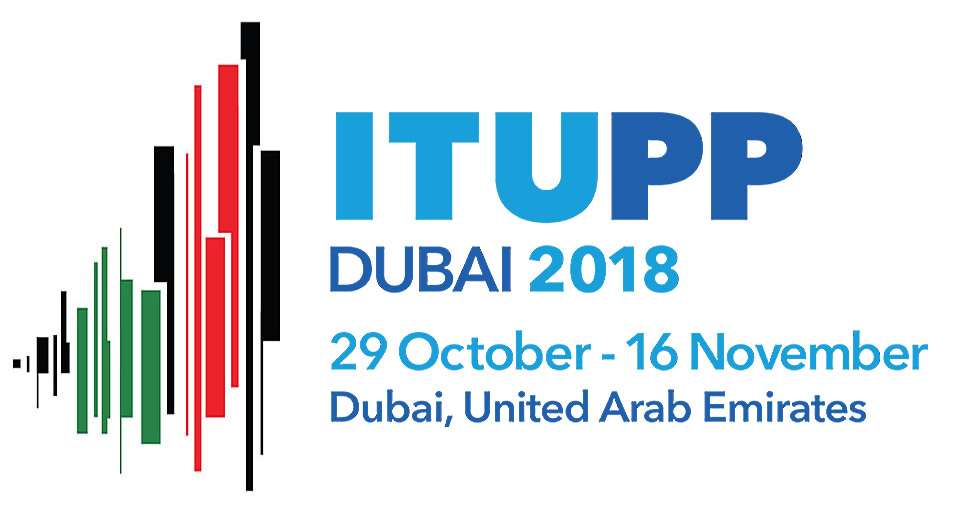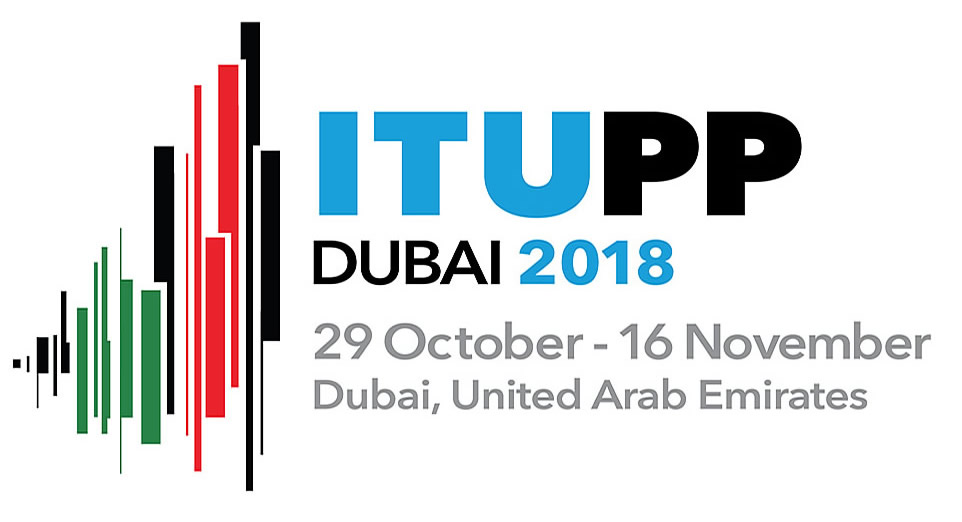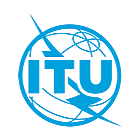
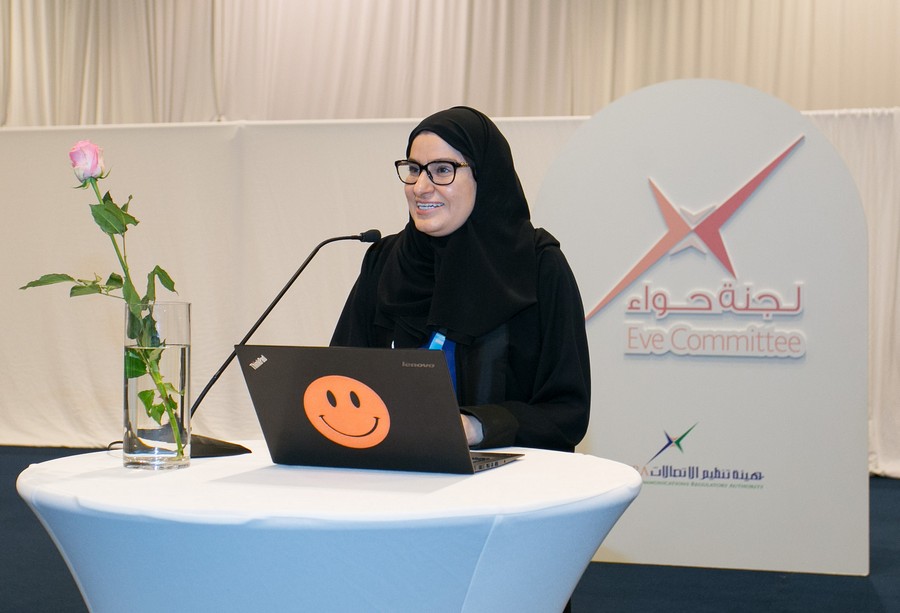
“We are proud that PP-18, which is held in the UAE, resulted in electing for the first time in ITU history a female to [ITU’s] top management,” said Ahlam Al Feel, Director of the Corporate Communication Department, Telecommunications Regulatory Authority, UAE. “For me, as an Emirati woman, this means a lot. We have tasted the sweetness of active and wide participation in the highest positions. Today, we have a Cabinet, of which a third is women, including the youngest female minister in the world. While the percentage of women in the UAE society is just under 50%, their share of the UAE labor market reaches 66% according to international reports,” said Ahlam Al Feel at a coffee reception held for women delegates at PP-18 this morning, hosted by the United Arab Emirates (UAE) Telecommunications Regulatory Authority Eve Committee, which recognizes the important role of women in the development of the UAE. Read about ITU’s commitment to bridging the gender divide here.
ICTs for humanitarian assistance and in emergency
ITU Member States have approved a revised resolution on the use of information and communication technologies (ICTs) in emergencies, including health-related emergencies, humanitarian crises and disasters, for early warning, prevention, mitigation and relief.
Emergencies can arise from disease outbreaks such as Ebola virus disease, MERS, SARS and Zika, natural disasters such as earthquakes, flooding, storms and tsunamis, and human-made conflicts. They may cause dramatic loss of lives and human suffering. Recent events clearly demonstrate the need for resilient communication infrastructure and for the availability and dissemination of information to assist public safety, health and disaster-relief agencies.
ICTs can play an important role in emergency and disaster early warning, preparedness, response and recovery. They can be used in search and rescue, logistics and operations, communication, and the collection of donations. In natural disasters, when existing terrestrial networks are disrupted, satellite services can constitute a reliable platform for the coordination of humanitarian assistance by government agencies and other humanitarian entities.
Search and rescue teams can use mobile-satellite service (MSS) applications to communicate, for example, with quake victims. Social media facilitate getting information about loved ones. Satellite systems operating in the radionavigation-satellite service (RNSS), like the Global Positioning System (GPS), can be used to target relief efforts. In health-related emergencies, ICTs can help keep individuals informed as to actions they can take to protect their life and health.
ITU Member States have resolved for ITU to collaborate with the United Nations Office of the Coordinator of Emergency Relief Operations, Office for Disaster Risk Reduction, and the UN World Food Programme, and with other relevant organizations, to enhance the Union's participation in activities related to emergency communications preparedness and early warning systems; and to continue to collaborate with all relevant parties, including the United Nations and its agencies, in particular the World Health Organization, in order to define and engage in programmes to respond to and address health-related emergencies in areas within the scope and mandate of ITU.
Connectivity efforts towards least developed countries
ITU Member States have approved a revised resolution to improve international connectivity in least developed countries (LDCs), small island developing states (SIDS), landlocked developing countries (LLDCs) and countries with economies in transition.
There is a clear recognition of the importance of information and communication technologies (ICTs) for LDCs, especially when it comes to achieving the Sustainable Development Goals (SDGs). Yet the majority of the world’s unconnected live in LDCs, SIDS, LLDCs and countries with economies in transition. Moreover, the geographical location of SIDS and LLDCs is an obstacle to international connectivity.
LDCs, SIDS, LLDCs and countries with economies in transition face different economic, demographic and social features and development challenges, with different results. Least developed countries, for example, have made great strides in improving information and communication technology access. They are recording impressive progress towards achieving SDG 9, with significant impact in the areas of financial inclusion, poverty reduction and improved health.
The revised resolution invites ITU Member States to cooperate with LDCs, SIDS, LLDCs and countries with economies in transition in promoting and supporting regional, subregional, multilateral and bilateral projects and programmes for the development of telecommunications/ICTs and the integration of telecommunication infrastructure making it possible to improve international connectivity conditions.
Read the backgrounder on digital inclusion of all.

ITU’s future headquarters
ITU Member States adopted a new resolution to set the conditions for the construction of the Union’s future headquarters premises.
The building project will need to be fully compliant with ITU financial rules and regulations and ITU procurement rules - and with due regard to cost, functional, smart and sustainable design and quality.
ITU Member States authorized a maximum budget for total project costs before sale of the Tower of CHF 140 million and an additional contingency fund of CHF 7 million to be used, if necessary, for unforeseen cost overruns.
The project financing can be supplemented by sponsorships and donations. As of 16 November 2018, sponsorship of CHF 10 million and CHF 5 million has been generously committed by Saudi Arabia and the United Arab Emirates, respectively, and a donation of USD 100,000 has been generously contributed by the Czech Republic.
The new resolution recognizes the need to involve ITU Member States in decisions regarding construction of the future Union’s HQ, given the significant and long-term financial implications for the Union. It also encourages ITU Member States and Sector Members to follow the example of Saudi Arabia, the United Arab Emirates and the Czech Republic in contributing to the new building.
Encouraging the participation of small- and medium-sized enterprises in ITU’s work
ITU Member States have approved a new resolution to encourage the participation of small- and medium-sized enterprises (SMEs) in the work of the Union.
SMEs are particularly important in the information and communication technology (ICT) sector, as they are a source of new ideas and innovation, and often account for a significant proportion of the economy in developing countries.
It is vital to ensure that the membership of ITU matches the rapid evolution of technologies so that ITU remains relevant, effective and ‘fit-for-purpose’ in the fast-evolving tech sector.
ITU has been based on public-private partnership since its inception in 1865. It is unique in the United Nations family in bringing together 193 Member States, over 700 private sector entities and more than 150 academic institutions.
ITU Member States have resolved to introduce reduced membership fees to encourage SMEs to participate as Associates in one of ITU’s Study Groups so that they can participate in the development of new international recommendations or standards. Each Member State will determine the eligibility of SMEs in their own country, according to their own national criteria, but the maximum size of an SME that can benefit from the reduced fees will be 250 employees, and ITU Council will determine the maximum annual revenue for eligible SMEs.
ITU Member States are invited to support and encourage SMEs to join ITU and participate in its activities.
Watch this video to learn more about ITU’s growing membership.
Working together to close the connectivity gap: GSMA's Belinda Exelby
“Our mission at GSMA is to connect everyone and everything to a better future. So everything that we do is done through that lens,” said Ms Belinda Exelby, Head of International Relations at GSMA, a trade body that represents the interests of mobile network operators worldwide. “To close the connectivity gap, we all need to work together. It won't close on its own. I would really like to make a plea to ITU Member States to work genuinely with the private sector so that we can all come together and overcome this challenge.” Read the interview here. Watch the video below for more insights.
How Romania's ICT regulators strike a balance for growth and innovation: H.E. Maria-Manuela Catrina
“What we try to do in Romania is to use ICT as an enabler of, let's say, a social elevator ... in order to take care that the new technology doesn't [produce] wider gaps between the different types of population," said Her Excellency Maria-Manuela Catrina, State Secretary of the Ministry of Communications and Information Society in Romania. Read the interview here. Watch the video interview below.
Behind the scenes
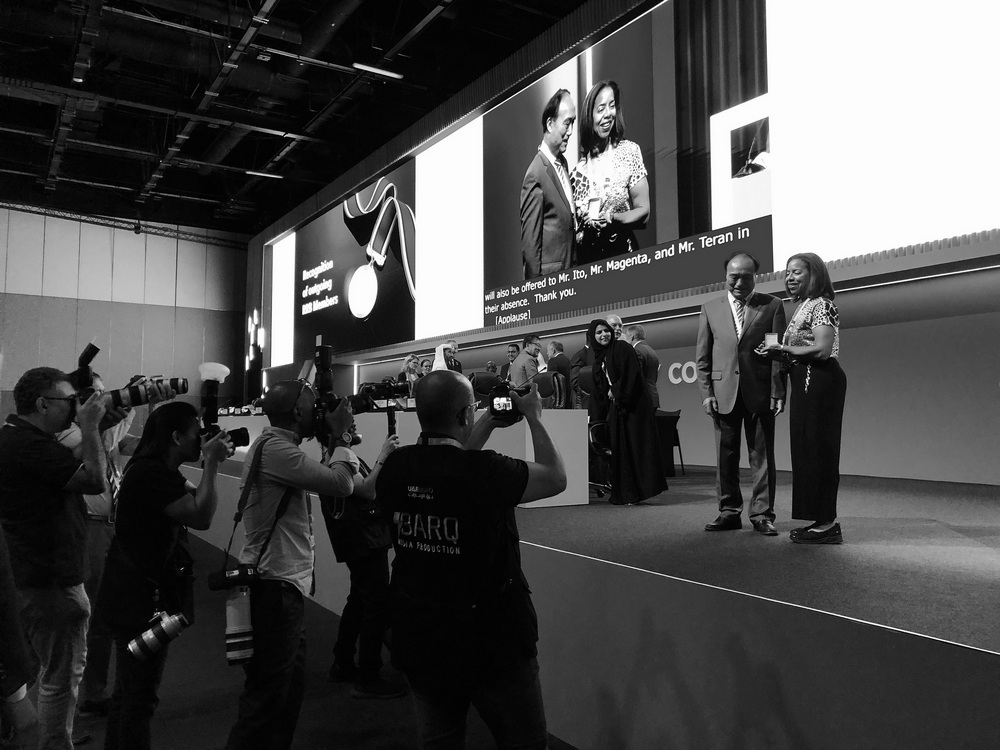
Captioning is a service provided for the hearing impaired. It takes 2 people on site to capture what speakers say in 'real time'. View more sneak peek photos here.
